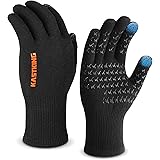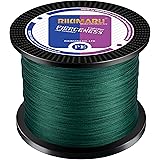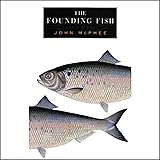Setting out for a solo fishing camp can be an exhilarating experience, a true test of self-reliance and connection with nature. You imagine perfectly packed gear, seamless navigation, and a delicious meal cooked over an open fire. However, as anyone who has ventured into the wilderness knows, reality often presents its own set of challenges, sometimes including the minor miscalculation of just how much ‘kit’ you’ve decided to haul for a simple overnight stay. That honest appraisal of preparedness, from underestimating gear to realizing navigation skills need a refresh, makes the journey truly relatable and rewarding.
The spirit of solo bushcraft, much like the adventure documented in the video above, lies in embracing these unexpected moments and learning from them. It’s about more than just setting up a canvas tent or casting a line; it’s about rediscovering fundamental outdoor aptitudes and enjoying the profound peace of a river bank. This article delves deeper into the essential elements of planning and executing a memorable solo fishing camp, focusing on traditional skills and the joy of wild cooking, such as a hearty spit roast beef dinner.
Embracing the Journey: Gear & Navigation for Solo Adventures
When embarking on a solo fishing camp, the gear you choose and your ability to navigate effectively are paramount. Our adventurer in the video notes a personal challenge: “I seriously underestimate all my kit today.” This highlights a common dilemma in outdoor pursuits. Balancing comfort with weight, especially for a “one-nighter,” requires careful consideration. A robust canvas tent, like the Dutch army desert camo model mentioned, offers durability and classic aesthetic but can be heavy. Complementing it with lighter options, such as a DD tarp (like the 3.5-meter tarp mentioned), provides flexibility for varying weather conditions and offers crucial rain protection, particularly around potentially leaky tent zips.
Equally critical is navigation. The video’s protagonist openly admits, “My navigation skills are not what they used to be,” preferring the “old-fashioned way” with a map over battery-dependent satnavs. This preference speaks to the core of traditional bushcraft. Relying on a map and compass ensures you remain self-sufficient and hone a vital skill often overlooked in the digital age. Regular practice, even on familiar trails, helps keep these skills sharp and prepares you for venturing “outside your comfort zone.” Understanding topographical features, reading contour lines, and recognizing natural landmarks become intuitive, building confidence and safety in remote areas.
Selecting Your Solo Fishing Camp Spot
The choice of campsite significantly impacts your overall solo fishing camp experience. A river bank offers excellent fishing access but also presents unique challenges, particularly regarding erosion. The video highlights areas where the river has “under-cut the banks,” creating unstable edges, especially “when it’s really on flood.” Identifying stable ground is crucial for safety and comfort. Stone banks, for instance, tend to be more resilient against erosion than sandy or softer soil areas.
Consider the natural resources available at your chosen spot. Ample firewood, like the “nice bone-dry log” observed, is a major advantage for campfires, warmth, and cooking a delightful spit roast beef dinner. Proximity to a deep fishing hole, as the video’s setting offers, directly influences your chances of a catch. However, also assess the impact of recent weather; debris from floods can accumulate, making some areas less ideal or requiring cleanup before setting up camp. Remember, a good camp spot isn’t just picturesque; it’s practical and safe.
Wilderness Cooking: The Art of the Spit Roast Beef Dinner
One of the most rewarding aspects of solo camping is cooking a delicious meal over an open fire. The video showcases the preparation of a “roast joint of beef” using a spit roast method, a timeless technique for campfire cooking. Setting up a spit roast involves securing two uprights (often carved from sturdy logs or found branches, as demonstrated with a “washed-up bit of wood”) and a crossbar from which to suspend the meat. The slow rotation of the beef over glowing embers ensures even cooking and imparts a smoky flavor that’s impossible to replicate indoors.
While the video focuses on the beef, thinking about accompaniments elevates the meal. The mention of “backup Yorkshire puddings” illustrates the value of bringing some pre-prepared items or simple additions that don’t require extensive cooking. Freshly boiled water from a “German army tin thing” can be used for drinks or to rehydrate sides. Even if the fishing doesn’t yield a catch, a well-executed spit roast beef dinner turns a simple overnight stay into a gourmet wilderness experience. This type of slow cooking also encourages you to relax by the fire, soaking in the “peace and quiet.”
Beyond the Catch: The Broader Appeal of River Camping and Bushcraft
Even when “still no fish” bite, a solo fishing camp offers much more than just angling success. It provides an immersive experience in nature, allowing you to observe the environment closely. The sight of a “canoe log” big enough to be carved sparked an exciting “summer to-do list” idea for the adventurer. Such large logs, often found along riverbanks after floods, represent natural resources waiting to be transformed using bushcraft tools like a chainsaw and axe.
River environments are dynamic, constantly shaped by water flow and weather. Witnessing the “wash-up” and the direction grass points after a flood offers insights into hydrological processes. Understanding these natural changes helps you adapt your camping strategies, from selecting stable ground to identifying areas rich in resources. The satisfaction of a canvas tent setup, a crackling fire drying clothes, and the sounds of “water, birds and the wind going through the trees” are the true rewards of wild camping. These moments foster a deeper appreciation for the wilderness and personal resilience, far beyond the success of a fishing line.








